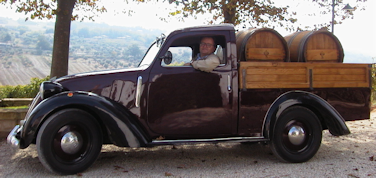
Boccadigabbia
Boccadigabbia was part of the Bonaparte estate in the Marche after the annexation of the Marche by the Napoleonic kingdom of Italy in 1808, which partly explains the presence of Cabernet, Merlot, Pinot Noir and Chardonnay in the range. It was only really after the second world war that the 1200 hectare estate, of which Boccadigabbia was just one farm, began to be broken up and sold off. Current owner Elvidio (Elvio) Alessandri's father Mario bought the farm in 1956 directly from His Imperial Highness Prince Luigi Napoleone Bonaparte.
The original 10 hectare vineyard is close to the sea and faces south-west. The vineyards are on sandy, chalk soil and stretch from the top of the hills to the Caronte depression which runs down into the Adriatic. The area has a micro climate quite different from some of the neighbouring valleys, with wide temperature variations. Here the family's ambition was to produce wines which recreated those that had achieved such renown in the Napoleonic era.
In 1996, the family bought another vineyard about 25 km from the sea, in Macerata province, further into the heart of the Marche. These vineyards have allowed an expansion into the more indigenous local varieties, such as Montepulciano, Sangiovese, Maceratino (Ribona), and Verdicchio.
Ribona, also known as Sea Verdiccio or Maceratino (the latter because it is unique to the Macerata province) is one of the delightful surprises of Italian viticulture, one of the answers to the question 'what are all these varieties?' when you are told Italy has 350 authorised grapes and possibly another 500 that are 'recognised'. There are only 244 hectares of Ribona, so it really is a bit of a rarity, but it has come to be seen as one of the qualitative grapes of the Marche, and its popularity may increase.
